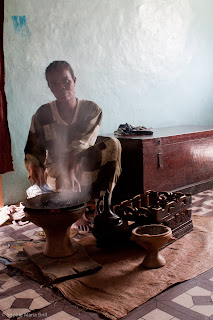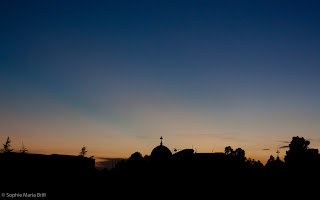First of all, I’d like to apologize for not writing in such a long time. I don’t mean to leave anyone hanging—I guess I’ve just been too busy with everything here to sit down and write about it. Also, the few times I have actually sat down to write, I’ve experienced massive brain farts and ended up daydreaming about teaching Waldorf rounds and word games So, once again—my apologies! (I feel like I’ve been apologizing a lot in this blog, is that true? Sorry…again. Ahahah.)
I can’t believe that my time here is already more than halfway over!! Time passes very strangely here—by day three I remember feeing like I’d already been here for months, and then I blinked and suddenly I had already been here for over a month. I have the feeling that these next five weeks are going to fly by even faster than the first seven did. I already know I’m going to be sad to leave. Aurele, the Israeli volunteer, left this past Friday, and as I watched him say goodbye to the children, especially the little ones, I tried to imagine myself doing the same. I started tearing up, so I stopped thinking about it.
A lot has happened since the last time I blogged. A week ago, two of the children from Little AHOPE were adopted. I didn’t actually hear about the adoption until two days before they left, so I was shocked and sad to see them go. It was a girl named Sosina who’s about 6, and a boy, Phillipus, who’s probably around 8 (they don’t know their exact ages), and they were adopted by an amazing woman who has already adopted ten children—on top of having nine of her own. They have a farm on an island off the coast of Washington, and this incredible woman has homeschooled her entire army of nineteen kids.
For three or four days before they left Ethiopia, Sosina and Phillipus stayed with their new adoptive mother at a guest house nearby. When I visited them there, they were dressed in brand new clothes, had a few new toys and Sosina’s hair had unbraided and pinned up into a neat, adorable ballerina bun. They played well together and were both very excited by their new surroundings.
On the day before they left the country, their new mother brought them back to the Little AHOPE compound so that they could say good-bye to their friends there. Sosina’s extended family—who had also visited her on Family Day—were also there to say their goodbyes.
I never got to know Phillipus very well, but Sosina was one of the coolest 6-ish-year-olds I’ve ever met. She has an insane amount of energy and she’s not afraid of anything. She seems to attack life with a passionate energy I’ve never seen before in someone so young. This day, however, she was quiet. She started to cry as soon as she arrived at the compound and was reunited with her friends, and for most of the afternoon she didn’t say a word to anyone around her. We were finally able to coax a smile out of her when I took out my camera and her friend started to pose with her for pictures, but that was about all we got until her family arrived.
As soon as they arrived, her family members rushed to her and covered her with hugs and kisses. It was extremely emotional. Sosina sat on her godmother’s lap as they talked with her new adoptive mother and the social worker, and she still didn’t say a word. After a long conversation, they asked to have pictures taken, with Sosina and her new family. I took tons of pictures and promised Sosina’s Ethiopian family that I would make sure they received prints. They were very grateful and they are some of the kindest people I’ve ever met. It was a very bittersweet day for them, but they had had time to prepare for it, and they were obviously very happy that their little girl had found a family who could take care of her.
After Sosina’s family had said their last goodbyes, all of the children were gathered to say one last goodbye to Sosina and Phillipus. They were dressed in white, traditional Ethiopian dresses. The children sat on the floor of the living room and sang a few of Sosina and Phillipus’ favorite songs. Then a few of the children stood and said a few parting words—wishing them luck for the future, thanking them for their friendship, and asking them not to forget them. More tears were shed when it came time to say their final goodbyes.
A few weeks ago I finally made contact with Layla House, which is an orphanage operated by the adoption agency Adoption Advocates International (AAI). Conveniently, it’s also within walking distance of AHOPE. Thanks to Emma Dodge Hanson, I already had the number of the volunteer coordinator at AHOPE, and the director of AAI, who has asked me to do a photo shoot in Opportunity House, Layla’s compound for the children with special needs. During the past two weeks there have also been two girls and a teacher from the Waldorf School volunteering at Layla, so I’ve started getting involved with volunteering there as well as AHOPE. Layla House is incredible. It’s much bigger than AHOPE, both physically and in terms of the number of children living there, and it seems to be incredibly well run. Since AAI was founded, they have placed over a thousand children. Layla house has an almost 100% adoption rate. There are gorgeous murals painted on almost all of the walls of the compound, and in the outdoor play areas there’s a lot of sunlight and greenery. Two of the volunteers there right now are actually girls my age who were adopted from Layla when they were younger, and who are now returning for a few months to volunteer and visit their biological families. I’m really excited by this opportunity to get to know them and become involved at Layla, and I’m hoping to be able to be there at least once a week for the rest of my time here.

Last week I visited the Fistula Hospital here in Addis Ababa. Obsteric Fistula is an abnormal opening between the birth passage and adjoining organs which occurs as a result of tissue death due to prolonged and obstructed labor. I won’t go into details, but basically, women who are unfortunate enough to experience this injury are thereafter unable to control their body fluids. This happens all too often, especially in the more remote, tribal areas of Africa, and as a result of this these women are shunned and often forced to live alone, separated from the rest of their tribe.
In 1959, Drs. Reginald and Catherine Hamlin from Australia came to Addis Ababa to work at a hospital for three years, performing surgery for women suffering from Obsteric Fistula. They ended up establishing the Addis Ababa Fistula Hospital—now called the Hamlin Fistula Hospital. Catherine Hamlin, now in her late 80’s, still works here as a surgeon; her husband died here a few years ago. Now, an average of 3000 procedures are done every year in the main hospital as well as in the five outreach centers which have been established across Ethiopia. The patients receive medical as well as psychological care, and 95% of the patients are able to fully recover. Cured patients are given a new dress and are able to return home to a new life. Those 5% who are unable to fully recover are unfortunately in need of life-long support from the hospital. Some are trained as nurse aids, and others live together in a rehabilitation center for chronically injured women until they are judged competent enough to be part of a cooperative or micro enterprise. The Hamlin Fistula Hospital is truly an amazing place, and I encourage everyone to learn about it and donate lots of money to the work they do there.
In my English classes, I haven’t made a ton of progress, partly because I’m not an English teacher and partly because I’ve been a bit sick lately and I’ve missed a few days. However, I recently decided to ditch the plan of trying to actually teach them how to speak English, and instead I’m teaching them to sing a few of the rounds which are still imprinted in my brain from my Waldorf childhood. They seem to enjoy this, so hopefully by the time I leave they’ll have a nice little repertoire built up.
Also, now that Aurele’s gone, I’m now in charge of taking a group of children from Big AHOPE over to the Little compound once or twice a week. The ten older children are all assigned activities to bring to the little kids—card games, Simon Says, Connect Four, dancing, running races, etc. The little kids love the company and the games, and the older kids obviously enjoy being the ones in charge. They have a mixtape of crazy dance music that they bring, so a dance party usually ends up breaking out in the living room, which is always a hit. Some of the caregivers even join in.
Soo, I hope this enough to hold you guys over for another…while. I’m sending everyone reading this—and even a few that aren’t—all my love and good wishes for the spring!
Cheers!

























